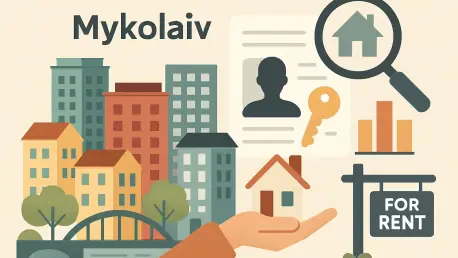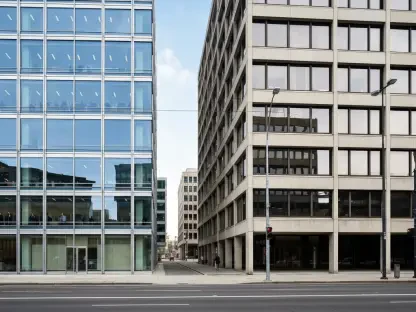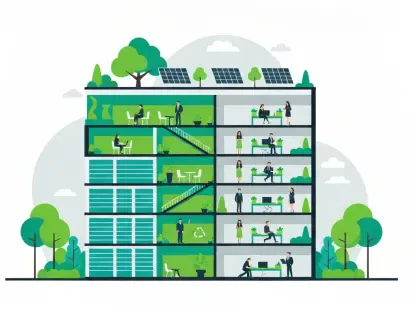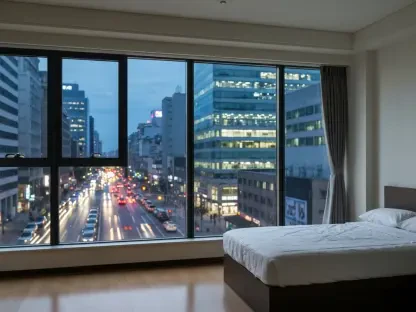As we dive into the evolving landscape of the rental housing market in Mykolaiv, I’m thrilled to sit down with Luca Calarailli, a seasoned expert in construction, design, and architecture. With a keen eye for industry trends and a passion for innovative solutions, Luca brings a unique perspective on how real estate dynamics, particularly in regional urban areas like Mykolaiv, are shifting. Today, we’ll explore the current state of the rental market, the affordability challenges faced by residents, the factors driving price increases, and the disparities in housing costs across different professions. Let’s get started with a deep dive into what’s happening in Mykolaiv’s rental scene.
How would you describe the current state of the rental market in Mykolaiv, and what changes have you noticed in demand over the past couple of years?
The rental market in Mykolaiv is quite dynamic right now. Over the past couple of years, we’ve seen a noticeable uptick in demand, especially for smaller units like 1-2 bedroom apartments. This surge is partly driven by economic factors and population shifts, as more people are looking for affordable housing options in urban centers. The central districts, in particular, are hotspots because of their proximity to amenities and workplaces, which makes them highly desirable despite the rising costs.
What types of properties are most sought after in Mykolaiv at the moment, and what makes them so popular?
Right now, 1-2 bedroom apartments in central areas are the most popular. They strike a good balance between affordability and convenience for young professionals, small families, and even students. Premium housing and private homes also have their niche, but larger apartments, especially those needing renovations, are much harder to rent out. People seem to prioritize location and move-in readiness over size, which reflects the practical mindset of renters in the current economic climate.
With Mykolaiv residents spending about 32% of their income on rent, how does this figure strike you in terms of affordability for the area?
Honestly, 32% isn’t entirely surprising for a regional urban area like Mykolaiv, where incomes can vary widely, and housing costs have been creeping up. It’s a significant chunk of income, though, and it signals that affordability is becoming a real concern for many. Compared to larger cities, it might be on par or slightly lower, but for a city of this size, it still puts pressure on households, especially those with limited earning potential.
How does this percentage compare to other regions or cities you’ve studied, and what factors might be influencing these differences?
In larger metropolitan areas, you often see rent taking up 35-40% of income, sometimes more, due to higher demand and limited supply. Mykolaiv’s 32% is a bit more manageable, but it’s still high for a regional center. Factors like local wage levels, the pace of urban development, and the availability of affordable housing stock play a big role. Mykolaiv’s market hasn’t seen the same level of new construction as bigger cities, which limits options and keeps prices relatively high for the income levels here.
For some workers, rent can consume up to 70% of their income, especially for larger apartments. What do you think is driving such a high burden for these households?
That 70% figure is staggering and points to a serious affordability crisis for certain groups. It’s largely tied to income disparities—lower-paying jobs like cleaners or baristas just don’t provide enough to cover rising rents, especially for bigger units like three-bedroom apartments. Beyond income, the limited supply of affordable larger apartments and the overall increase in rental prices exacerbate the issue. Many of these households likely have no choice but to stretch their budgets to secure adequate space for their families.
How are these high rental costs impacting the quality of life or financial stability for those most affected?
When rent takes up such a huge portion of income, it leaves little room for other essentials like food, healthcare, or savings. It can lead to chronic financial stress, reduced ability to plan for the future, and sometimes even debt. Quality of life suffers too—people might forgo leisure activities or live in substandard conditions just to make ends meet. Over time, this creates a cycle of instability that’s hard to break without intervention or a shift in market conditions.
Rental prices in Mykolaiv have jumped from around 8,000 to 11,000 hryvnias per month for a decent apartment. What’s behind this significant increase?
Several factors are at play here. Demand has definitely grown, especially in central areas, which pushes prices up due to limited supply. Economic pressures, like inflation and rising maintenance costs for property owners, also contribute. Additionally, the market is reflecting a broader trend where landlords are capitalizing on the active demand by adjusting rents to match what people are willing to pay, even if it strains affordability for many renters.
Why do you think certain professions, like drivers and couriers, spend a smaller percentage of their income on rent compared to others like cleaners or baristas?
It largely comes down to differences in income levels. Drivers and couriers often earn a bit more on average than cleaners or baristas, which means rent takes up a smaller slice of their earnings, even if they’re paying similar amounts. There might also be differences in housing choices—some professions may opt for shared accommodations or live further from the city center to save on costs, which can lower their rent burden relative to income.
What’s your forecast for the rental market in Mykolaiv over the next few years, especially in terms of affordability and price trends?
Looking ahead, I think the rental market in Mykolaiv will likely remain stable in the short term, as some experts have predicted, with prices continuing to edge up unless there’s a significant increase in housing supply or a shift in economic conditions. Affordability will remain a challenge, especially for lower-income workers, unless targeted programs or policies are introduced to ease the burden. Long-term, I’d hope to see more investment in affordable housing projects, but without that, we might see growing disparities in who can comfortably rent in desirable areas.









